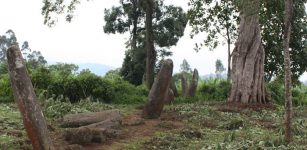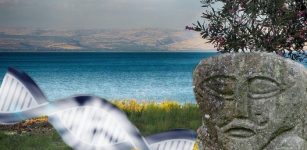Tooth Analysis Sheds Light On South Australia’s Early Colonial History
Jan Bartek – MessageToEagle.com – New archaeological techniques have uncovered the origins of 13 early South Australian colonists buried in unmarked graves in the Anglican Parish of St Mary’s Church in Adelaide.
Published today in Australian Archaeology, the new research involved isotope analysis of teeth excavated from graves to determine how many people buried were born in South Australia or Britain, as part of scientific efforts by Flinders University experts deploying this technique for the first time in the state.
The Proclamation of South Australia 1836, Charles Hill. Credit: Public Domain
The archaeologists studied the origin of people in a free ground section of the cemetery to help construct a clear picture of colonial migration before 1880.
Lead author and Flinders University Masters student, Christine Adams, says tooth enamel and dentine samples from the graves show one person was likely born in Adelaide, eight were originally from Britain and Ireland, and three could have been from either location.
“Only one person was likely born elsewhere according to our results. A total of 52 samples were tested, four samples per individual—26 for strontium, 26 for oxygen, and for both enamel and dentine. Strontium isotope samples were successfully analyzed from the enamel and dentine of all individuals,” she says.
“The finding that all individuals in this study may have, based on at least one isotope and dental material and supported by dietary data from the time, come from either Adelaide or the United Kingdom correlates well with the overwhelmingly British origin of colonists in South Australia and the cemetery’s own records before 1880.”
Flinders University co-author Associate Professor Ian Moffat says the study proves how isotope methods can be used to test the origin of case studies around Australia.
“This research technique is important for provenance studies where individuals could have migrated or moved substantial distances,” he says. “This study also shows that strontium isotope methods can be used to test a specific hypothesis rather than just being used to confirm a general location.”
Co-author and leader of the St Mary’s research project, Flinders University’s Professor Donald Pate, says the analysis combined a range of isotope investigations with further analysis of diets from previous studies.
“As the life history of these individuals is not well-documented in historical records, isotopic data provides important information about migration and mobility in a colonial South Australian population,” says Professor Pate.
Credit: Flinders University
“Our records and data suggest the majority of individuals interred within the free ground section of St Mary’s were either born in Britain or South Australia, but some may have migrated from other locations. Burial samples total 70 individuals at the cemetery, but degraded and missing tooth elements mean not all were suitable for investigation.”
See also: More Archaeology News
Professor Pate is a veteran of studies at the site. At the request of the church, research began at St Mary’s Cemetery 20 years ago, with archaeologists painstakingly recovering remains from the free ground section ever since.
The research, “Do dead men tell no tales? The geographic origin of a colonial period Anglican cemetery population in Adelaide, South Australia, determined by isotope analyses,” has been published in Australian Archaeology.
Written by Jan Bartek – MessageToEagle.com – AncientPages.com Staff Writer












